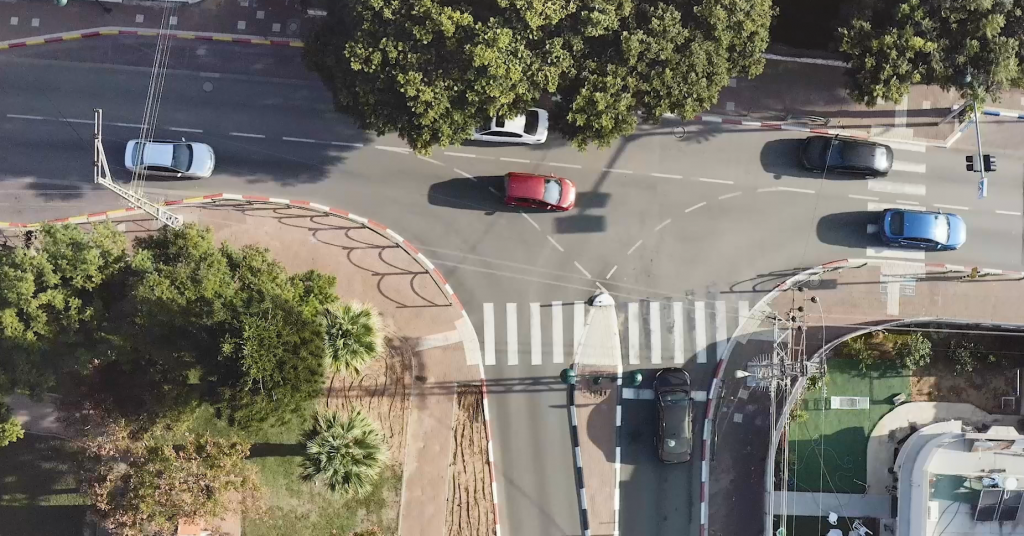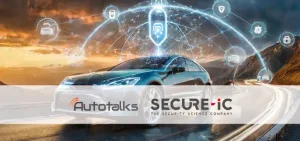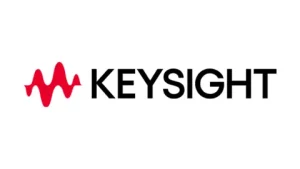
In the US, about 40% of the accidents occur in intersections[1], causing over 6,000 fatalities and half a million injuries per year. The most frequent critical reason is “inadequate surveillance” (~44%), which is basically a failure to look[2]. The next most common critical reason, with ~8.5%, is “false assumption of other’s action”. “Obstructed view”, which accounts for 8% of intersection accidents, is rarely a critical reason in non-intersection-related crashes. “Misjudgment of gap or other’s speed” is also one of the leading critical reasons (5.5%).
V2X can improve intersection safety by solving all the main problems that cause accidents:
V2X addresses “inadequate surveillance” by communicating with connected vehicles 360° around the vehicle. Any other sensor has a limited field-of-view and a specific range, classified as short, medium and long-range. An array of sensors is needed to cover the vehicle 360°. Today, few vehicles embed that array, but it can be assumed that more vehicles will increase the number of sensors. Yet, even a full-array of sensors doesn’t provide a hermetic perception. Side sensors are targeting mid-range, and will not observe a fast-moving vehicle bursting into an intersection. Object classification and movement prediction are more complicated due to the relative movement, potential camera near-field view, and limited sensors field-of-view. V2X consistently sense all surrounding connected vehicles, and can be used when other sensors fail or as a good redundancy. The critical failure of “misjudgment of gap or other’s speed” is also attributed to human sensing capabilities, which despite its limitations, is typically more reliable than machine sensing.
“False assumption of other’s action” can be solved only by V2X. In the future, connected vehicles will negotiate and coordinate their driving path, but even in the short term, V2X is the only sensor that provides the actual trajectory of the vehicle, instead of estimating it, as other sensors do. Information of key trajectory parameters, the steering wheel angle, and gas and brake pedals, are available only with V2X. For example, some people do not always before turning. An indication of the steering wheel and brake pedal status can buy the driver precious time before other sensors observe and understand the change in vehicle kinematics.
“Obstructed view” is another failure that can be solved exclusively by V2X. V2X is the only sensor that can “see-through” obstructions.
Roundabouts are built in dangerous intersections to decrease the accident rate. The classification of critical failure reasons, presented above, was performed in the US, hence it does not weight roundabouts, which are not common in the US. The classification of roundabout accidents is a bit different. The most common accident is entering[3], where an entering vehicle fails to give right-of-way and collides with a circulating vehicle. As mentioned above, V2X is excellent to predict future movement, capable of earlier understanding if a driver exits the roundabout or continues to circulate. V2X delivers the accurate speed of the circulating vehicles. Many roundabouts have imperfect visibility, further complicating the speed estimation, while V2X is immune to that.
Rear-end accidents are also common (18%) at roundabouts. A sample scenario is a sudden stop to yield for a pedestrian. Only V2X can give an advanced alert to an upcoming stop, even when the vehicle ahead is still moving forward.
At Autotalks, we just released a new Video showing how V2X contributes to intersection safety. The T-junction in the video falls under the “obstructed view” category. Unfortunately, it is not that rare. Many twisted roads contain limited visibility intersections. In our tests, C-V2X technology achieved over 300m communication range, despite heavy traffic and major obstructions. This is far and beyond the need, which is about 100m to complete a safe turn in a fast-moving road.
We all know a dangerous intersection that we try to avoid, even if guided by Waze. V2X can enhance safety even in the scariest of intersections.
The Video and blog post describe the benefit of V2X Day1. V2X Day2, with sensor sharing, will further boost intersection safety. The explanation about Day2 will be explained in the next video and blog post. Stay tuned.
[1] https://crashstats.nhtsa.dot.gov/Api/Public/ViewPublication/811366
[2] https://www.fmcsa.dot.gov/safety/driver-safety/cmv-driving-tips-inadequate-surveillance
[3] https://onlinepubs.trb.org/onlinepubs/circulars/ec003/ch28.pdf






